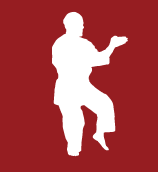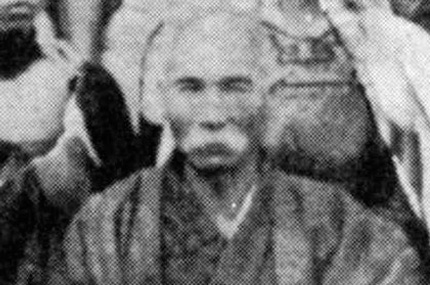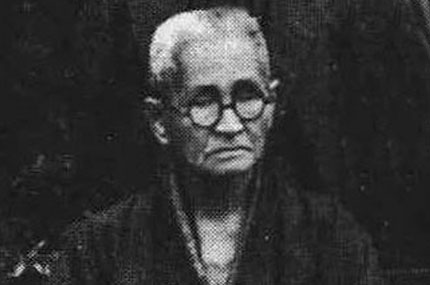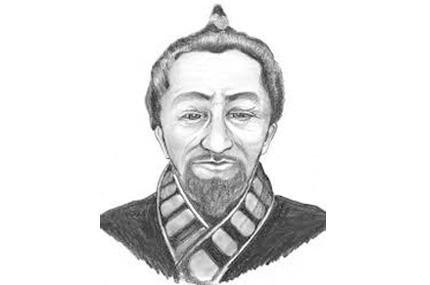


Chojun Miyagi (宮城 長順) is the founder of Goju-ryu(剛柔流) Karate. He was Okinawan martial artist who founded the school of karate by blending Okinawan and Chinese influences. He studied under the Naha-te master Kanryo Higaonna. After Kanryo Higaonna’s death, Chojun Miyagi learned some local Chinese martial arts in China. He traveled to Fujian and Shanghai to train and research southern Chinese Boxing.


Kanryo Higaonna(東恩納 寛量) also known as the Ryukyuan martial artist who founded a fighting style known at the time as Naha-te. He went to study martial arts in China Fuzhou from 1876 to 1888. He returned to Okinawa with those skills. His student, Chojun Miyagi, would later found Goju-ryu Karate(剛柔流). Several of Kanryo’s students went on to become influential masters of what came to be called karate, He has the greatest influence on masters who include Chojun Miyagi, Kenwa Mabuni, Kyoda Shigehatsu, Koki Shiroma, Higa Seiko, Tsuyoshi Chitose and Gusukuma Shinpan.


Kenwa Mabuni(摩文仁 賢和) was the founder of Shito-ryu(糸東流). He was one of the first karateka to teach karate on mainland Japan, and was credited for developing this style. Born in Shuri on Okinawa in 1889, he studied and reserched both Shuri-te(首里手) and Naha-te (那覇手) , and began his training in the art of Shuri-Te at the age of 13 under Anko Itosu (糸州 安恒) . After that, he began to learn Naha-Te under Kanryo Higaonna(東恩納 寛量). Mabuni derived the name for Shito-ryu(糸東流) from the first Kanji character in their names, “Shi (糸)” from Ito(su) and “To (東)” from Higashi(onna). Kenwa Mabuni passed away on May 23, 1952.


Anko Itosu (糸州 安恒) is considered by many the father of modern karate. He was born in Ishimine, Shuri in 1831. He was a master of Karate that was active in the Ryukyu Kingdom period through the Meiji Period. He made karate accepted as part of the regular physical education curriculum in the school system, and is also known as the first person to start the “modernization” of Karate. He passed away in 1915.


Sokon Matsumura (松村 宗棍) was given the title “Bushi” meaning “warrior” by the Okinawan king in recognition of his abilities and accomplishments in martial arts. Matsumura served as a close advisor and bodyguard to three Ryukyuan kings. This position enabled him to travel widely to places such as Fuchou, Satsuma and the Fukien Shaolin Temple where he studied several forms of Chinese boxing and other fighting styles. His martial arts have been the base of many karate styles, for example, Shorin-ryu, Shotokan, and Shito-ryu. Ultimately, all modern styles of karate that evolved from the Shuri-te lineage can be traced back to the teachings of Bushi Matsumura.


Gichin Funakoshi (船越 義珍) is known as the founder of Shotokan Karate (松涛館), the most widely known style of karate, and is attributed as being the “father of modern karate”. Following the teachings of Anko Itosu and Anko Asato, he went to Tokyo to introduce the Okinawan martial art. He was one of the Okinawan karate masters who introduced karate to mainland Japan in 1922. He taught karate at various Japanese universities and became the honorary head of the Japan Karate Association upon its establishment in 1949. Funakoshi’s famous words “Karate Ni Sente Nashi (there is no first attack in Karate)”.


Choshin Chibana (知花 朝信) was an Okinawan martial artist who developed Shorin-ryu (小林流), a karate based on what he had learned from Anko Itosu. In 1928, Chibana Choshin was born on June 5th, 1885 in Shuri. Choshin began his study of martial arts when he was 15 years old. He was the first to establish a Japanese ryu-ha name for an Okinawan Karate style. He taught Karate at the Shuri Police Academy. In 1956, he became the President of the Okinawa Karate Federation. Chibana had received the title of Hanshi (High Master) from the Dai Nippon Butokukai. In 1960, he received the First Sports Award for his overall accomplishments in the study and practice of traditional Okinawan Karate-do.


Chotoku Kyan (喜屋武 朝徳) was an Okinawan Karate master who was famous for both his Karate skills and his colorful personal life. He had a large influence on the styles of Karate that would become Shorin-ryu (少林流). From the age of 16, Chotoku studied under Matsumura Sokon for two years. He moved to Tokyo and stayed there for 9 years. After returning to Okinawa, he began studying Tomari-te under Kosaku Matsumora from the Tomari village. While at 30 years of age, he was considered a master of the Karate styles known as Shuri-te and Tomari-te. Kyan was also was responsible for having Karate introduced into the curriculum of the Okinawa Prefectural Agricultural School where he taught.


Shoshin Nagamine (長嶺 将真) was a Japanese author from Okinawa as well as a soldier, police officer, and Karate master. He was the founder of the style of Karate Matsubayashi-ryu. Nagamine was born in Naha in 1907. He was born in Tomari, Okinawa. After graduation in March 1928, he began to study martial arts, moving to Shuri and training under Zenryo Shimabukuro (島袋善良) and Ankichi Arakaki. He became the first vice chairman of the Okinawa Karatedo Federation and served as chairman of the Fourth Phase Federation for eight years from 1961 to 1969. In 1977, He organized the World Matsubayashi-ryu (松林) Karatedo Federation.


Kanbun Uechi (上地 完文) was the founder of Uechi-ryu, one of the famous Karate styles of Okinawan Karate. Uechi was born in the town of Motobu in northern Okinawa. Uechi took up the study of the Kung Fu system called “Pangai-noon”, under a Chinese master named Shushiwa. Uechi received a certificate of mastery in 1904, and he opened his own dojo in Nansoye, China. After returning to Okinawa, the style he taught was renamed to “Uechi-ryu” Karate in 1940. Uechi-ryu is one of the major styles of Okinawan Karate, and it spread throughout his homeland.


Kosaku Matsumora (松茂良 興作) was a Ryukyu Karate master. He was born in Tomari. He studied and trained Karate in Tomari under Uku Karyu. Matsumora had a very strong sense of justice and he once used his skills to defeat a Satsuma warrior who was terrorizing the citizens of Tomari. Matsumora’s students Choki Motobu and Chotoku Kyan went on to influence next generations.

To learn more about the history of Okinawan Karate, please join us on our Karate History Tour, a tour you can experience only in Okinawa. Please click here for more information on our Karate History Tours.
We can arrange a dojo training session or any program based on your requests. Please click here for a list of the many different programs that we have to offer you at Ageshio Japan.
